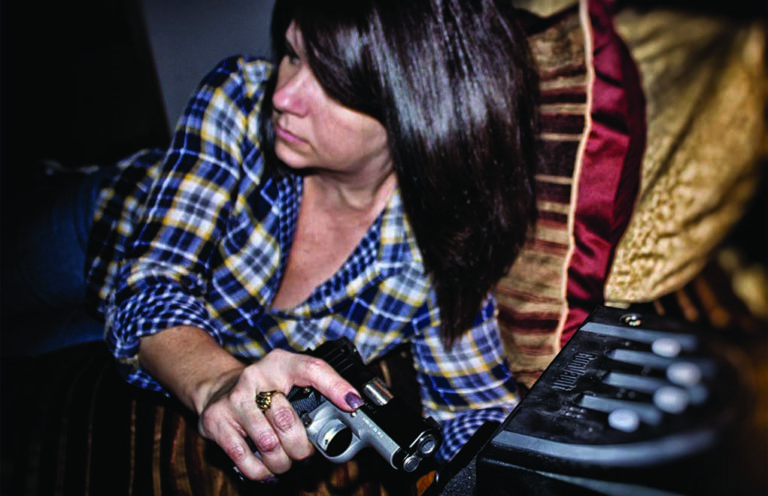

Home-defense vs concealed carry gun … do you know the difference? Is there one? Or is it really a conversation over optimization?
Humans tend to make things more complicated than they really are. This is probably because in this modern world, we have way too much time to think about stuff. Back when work and chores consumed almost all our waking hours, we didn’t have time to deliberate every nuance of personal protection. Anyone who felt he needed a handgun for protection picked one he liked, carried it with him every day and then put it on his nightstand when he went to bed.
Modern practitioners of personal protection would almost surely consider this approach shortsighted and argue that a home-defense gun is a completely different animal than a carry gun.
From a tactical perspective, there might be some truth to that—but from a practical standpoint, it could be a bad idea. If there’s one universal truth when it comes to personal protection with a handgun, it’s that those practicing the discipline don’t get enough training. It’s not a good idea to complicate the process with the necessity of being able to effectively run two different weapon systems.
Similarly, as my friend, Sheriff Jim Wilson, likes to point out, “If you rotate your everyday-carry gun, you don’t have an everyday-carry gun.”
Practical—and Tactical
However, having a home-defense gun that’s different from your carry gun does not necessarily mean you must learn to run two different guns. For example, when I was working the street, my duty gun was a Glock Model 22, but I also carried a Glock Model 27 on my ankle. The operation of both guns was identical; they both used the same magazines. But they were just sized differently for different roles.
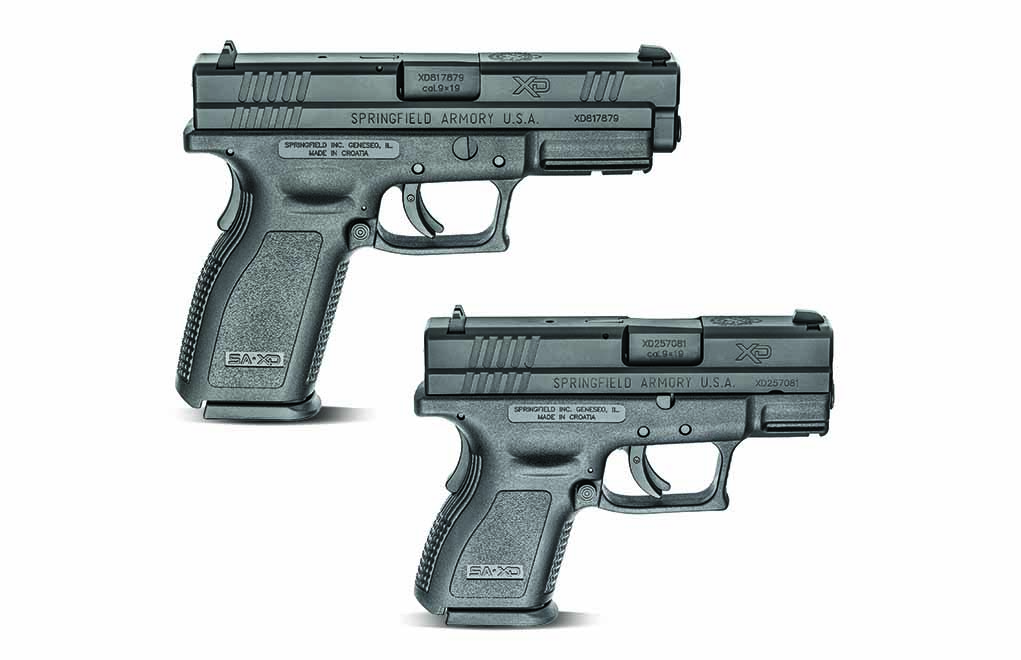
The same logic could apply to home-defense and carry guns. You could carry the Glock Model 27 easier, because it’s smaller, but then have the larger—higher-capacity, easier-to-shoot—Model 22 on your nightstand.
This same-but-different gun approach comes in a variety of options: Several manufacturers make duty, carry and compact versions of the same handgun. This allows you to fit the handgun to the situation without having to learn to run a different platform. I guess you could argue that this approach is both practical and tactical. Of course, there’s absolutely nothing wrong with using the gun you keep in your nightstand for everyday carry, especially if it’s a handgun you’re comfortable carrying all day, every day.
Let’s take a deeper dive into what the role of a home-defense handgun actually is—or maybe should be.
The idea of any defensive handgun is to optimize your chances of survival. Logic then dictates that hindering your ability to survive at home by using a handgun of reduced size, capacity or features so that it’s compatible with everyday carry is a bad idea. With that in mind, here are some things you might not have considered regarding a handgun for home defense.
Weapon Lights
I’ve never been the victim of a home invasion. The 85-pound Rhodesian Ridgeback that considers our home and everything around it her eminent domain will likely preempt all but the attempts of some elite tactical unit’s access to my abode. Still, on more than one occasion, she’s roused me from sleep, and I’ve armed myself to investigate her agitation.
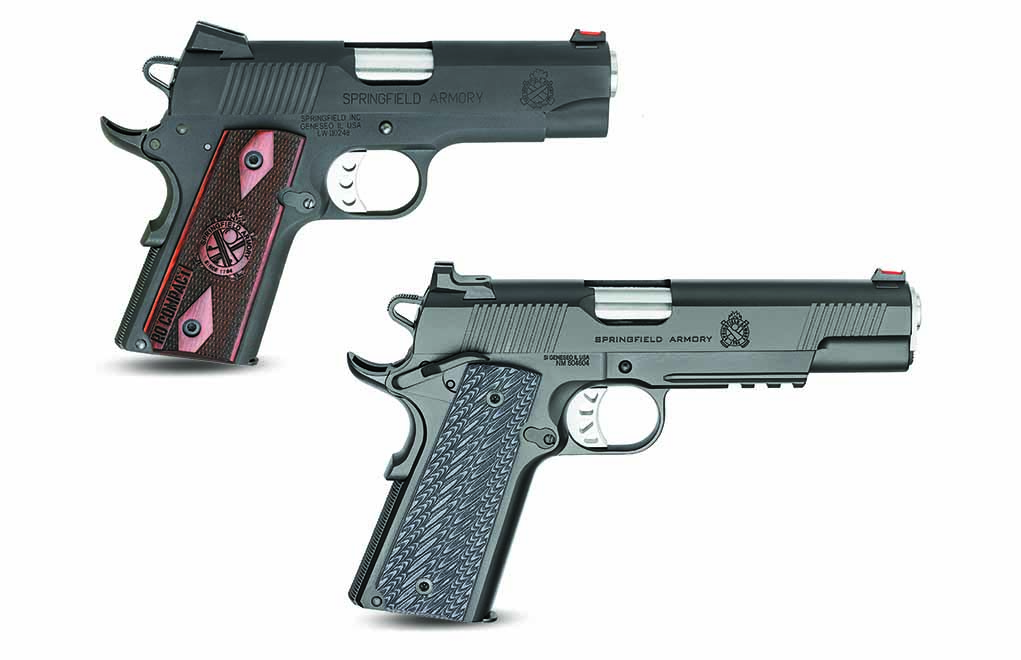
The handgun in my nightstand I use for that purpose has a light attached to it. That, in conjunction with the flashlight that’s kept with the handgun, gives me the tools I need to deal with bad things in the dark.
Is a light a necessity for a defensive handgun? No. It is a good idea? For sure. Generally speaking, those who carry a handgun on an everyday basis don’t carry a handgun with a light attached to it (they carry a flashlight). This isn’t because carrying a handgun with a light is stupid; it’s because when a light is added to a handgun, it becomes harder to carry. This is the same reason that ultra-compact handguns are the most popular handguns for carry: Humans almost always default to comfort. Having a home-defense handgun that has a weapon light attached to it makes sense.
Lockdown Home Defense:
- Home Defense: AR Vs Shotgun
- Why The Home Defense AR-15 Is The Best Choice
- Why The Home Defense Shotgun Rules The Roost
- Light ‘Em Up: Home Defense Lasers and Lights
- Birdshot For Home Defense: Too Much, Too Little Or Just Right?
- 4 Best Hidden Gun Safe Manufacturers
Handgun Size
Size consideration is also important. The smaller, compact handguns that are ideally adapted to everyday carry are generally harder to shoot as fast and accurately as larger-framed guns. The aforementioned Glock models 22 and 27 are perfect examples.
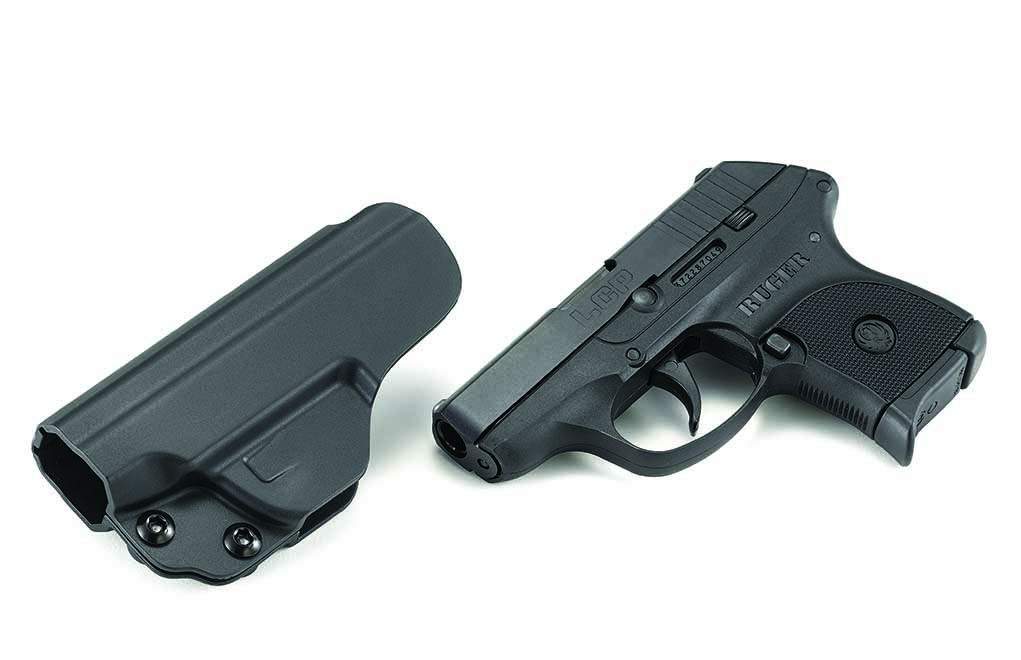
Why should you intentionally handicap your shooting ability with a smaller gun when you don’t have to? Carry comfort is not an issue with the nightstand or the lockable gun vault beside your bed.
Probable Users
Along that same line of thinking, what if the plan with your home-defense gun is for it to be usable by others who live with you? That compact .45 Auto you carry every day might be too much gun for your wife, son or daughter. They might not be comfortable with the recoil—or, more importantly, they might not be able to rack the slide. Either reason is justification for a home-defense gun that has a more universal appeal. Additionally, even if you’re comfortable defending your home with your everyday-carry gun, a situation could arise for which you want your partner armed as well.
Back to the point of using a different-but-same gun style for home defense as you use for everyday carry, let’s use Glocks as an example again.
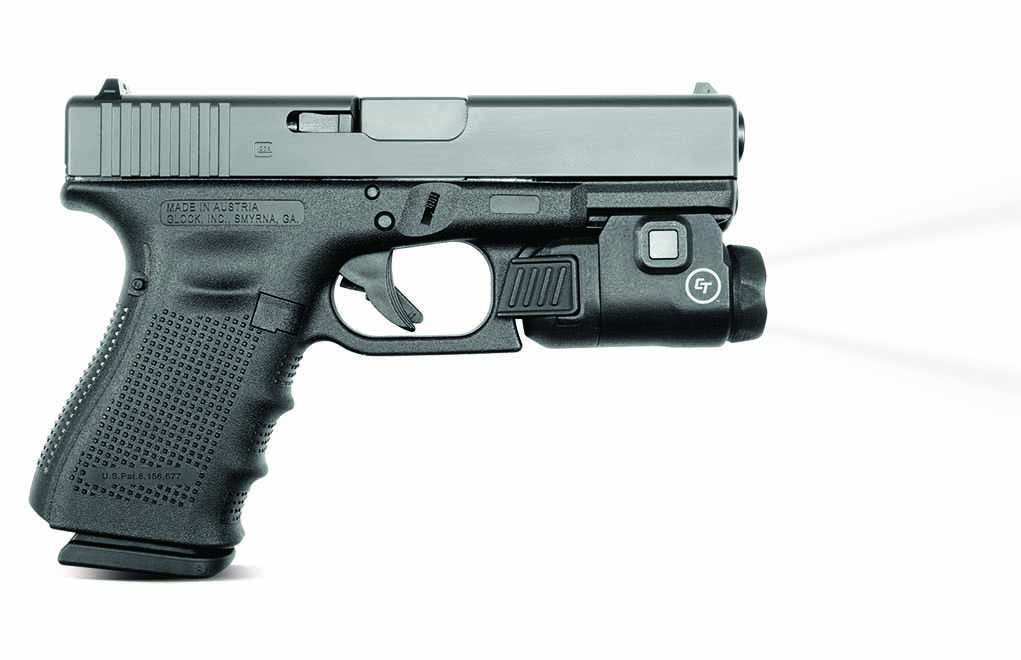
All Glocks operate the same, so you could carry that 10mm or .45 every day and then keep a 9mm Glock for home defense so that it’s more compatible with all of those who live in your home. Hell, if necessary, for resident compatibility, you could even have a Glock Model 42 in .380 ACP as a home-defense gun. The key here is that the handgun feel and operation are the same as for what you carry every day.
Ammunition Thoughts
Other considerations are ammunition and terminal performance. Let’s assume you’re a very small-framed person who finds anything larger than something sized like a Ruger LCP impossible to carry comfortably. While the .380 ACP can be effective at stopping an attack—especially when it’s loaded with the new Hydra-Shok Deep load from Federal—it doesn’t deliver the same level of terminal performance as the 9mm Luger, .40 S&W or .45 Auto. Because a home-defense handgun is not carried, you can opt for a bigger, larger-caliber handgun with a higher capacity.
Similarly, for everyday carry, you might prefer to load your handgun with ammunition that’s consistent with what police agencies use. Typically, this is ammunition that will expand to about 1.5 times its original diameter, defeat most common barriers and penetrate 12 inches or more. You might not want this sort of terminal performance in your home, so instead, you could opt for a load that has less chance of over-penetration or passing through interior walls. Maybe your carry gun and home-defense gun are exactly the same; they’re just loaded with different ammunition.
Home Defense Gun: The Dedicated Tool
Finally, there’s a lot of logic to support the concept of the “dedicated tool.” Your lug wrench stays with your car, and your dustpan stays with your broom. You don’t have to look for them; you know where those tools are in case you need them.
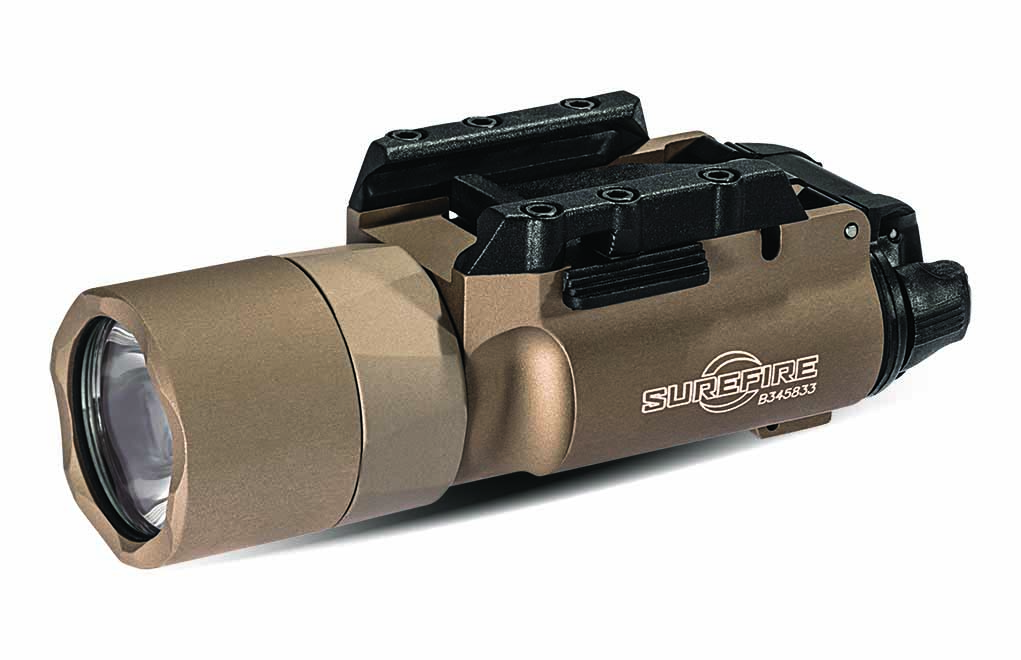
That’s the role of the home-defense handgun. It exists for a single purpose, and it lives out its life in the same—never-changing—location. It’s not your gun; it’s not your partner’s gun. It’s your home’s gun. It should be best configured to defend your home.
Heck—your home-defense handgun could be exactly the same as your everyday-carry gun. The difference is that it has a weapon-mounted light and that it rests in a dedicated location so you always know where it is. Ideally, this location is close to your bed and involves some sort of lock box or gun vault to keep the gun away from hands that should never touch it.
Granted, we all live differently. You might live alone and have no friends. You might leave the Desert Eagle with a weapon light attached that you carry every day out on your nightstand. You might live with a 160-pound rottweiler. You might even have an AR-15 and a 12-gauge shotgun propped up beside your bed.
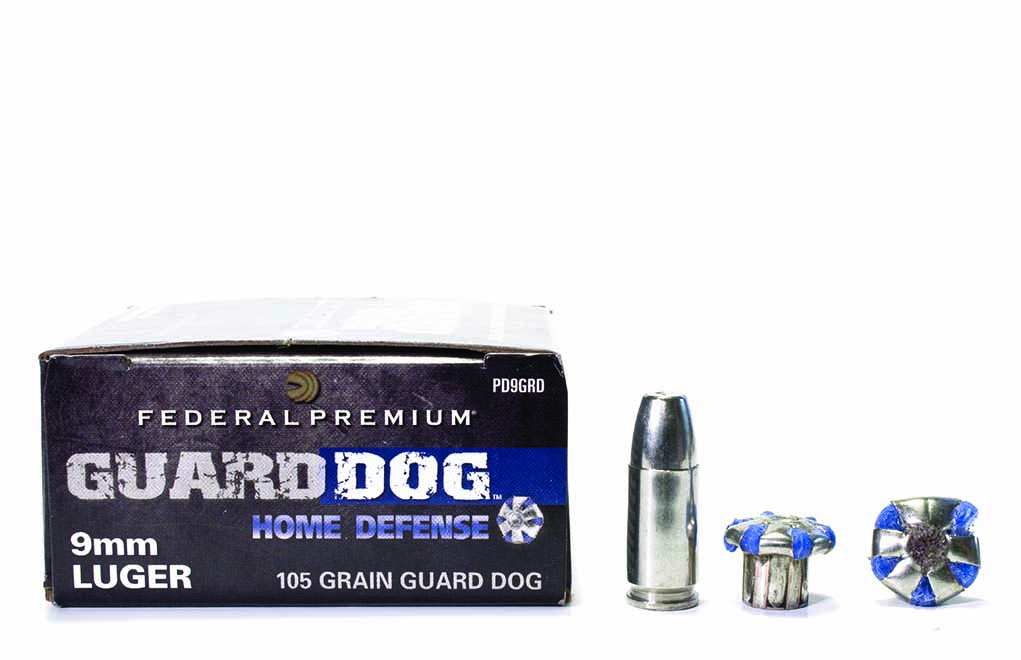
If that’s the case, carry on; none of this applies to you. On the other hand, you might be a lot closer to “normal,” have a wife and kids, and have a compact handgun you carry every day for personal protection.
If that better describes you, a home-defense handgun with a weapon light that’s identical—or at least similar in operation—to the gun you carry every day makes good sense. So, too, does a handgun that can be operated by anyone in your home who might need it at some point.
You can use your carry gun for home defense. However, ideally, your home-defense gun should be the same … but a little bit different. Remember: It’s about optimizing the chances for survival.
Editor's Note: This article originally appeared in the April 2020 issue of Gun Digest the Magazine.

Next Step: Get your FREE Printable Target Pack
Enhance your shooting precision with our 62 MOA Targets, perfect for rifles and handguns. Crafted in collaboration with Storm Tactical for accuracy and versatility.
Subscribe to the Gun Digest email newsletter and get your downloadable target pack sent straight to your inbox. Stay updated with the latest firearms info in the industry.

![Best Concealed Carry Guns In 2025 [Field Tested] Wilson Combat EDC X9S 1](https://gundigest.com/wp-content/uploads/Wilson-Combat-EDC-X9S-1-324x160.jpg)


![Best 9mm Carbine: Affordable PCCs [Tested] Ruger Carbine Shooting](https://gundigest.com/wp-content/uploads/Ruger-Carbine-Shooting-100x70.jpg)
![Best AR-15: Top Options Available Today [Field Tested] Harrington and Richardson PSA XM177E2 feature](https://gundigest.com/wp-content/uploads/Harrington-and-Richardson-PSA-XM177E2-feature-100x70.jpg)

Interesting topic. You really can use your EDC for both EDC and home defense. In truth, that may be the only option some people have depending on their circumstances, and there is nothing wrong with that. I did that for many years. At this point, I admittedly do have different guns for each.
Neither my wife nor I subscribe to the tiny pistols that are hard to shoot and don’t really encourage much practice like the little Ruger LCP. We both carry Taurus G2cs for EDC, along with a Jericho 941 with a laser in the car. At the bedside, I have a G21 with a light and a Mossberg 590M Shockwave on my side of the bed and my wife has a Beretta 92 and a good light on her side.
We feel very good about our choices, and everyone else should too. It’s all about what works for you. Happy New Year, everybody!